This week's assignment is to make some sort of construction kit out of cardboard using the laser cutter. I am also thinking about trying to make a prototype 2-clarinet clarinet stand out of cardboard - there are some folding ones out there for sale, but I would like to make one that can hold 2 clarinets instead of just one and packs flat instead of packing into the barrel of the instrument...As for the construction kit, I think that I am going to try to make a little truck for my nephew Dylan. He is 2, and he loves to play with toy trucks, but he also loves to open the doors (even if they are not supposed to open), take off the wheels (even if they are supposed to be permanently affixed), and so on. Then he wants my sister or her husband to "fix it." I thought that I would make a cheap toy that was MADE to be taken apart. The only problem with this master plan is the potential choking hazard of little pieces. I will have to ask my sister about that.
D has had this truck since last Easter - It probably doesn't have wheels anymore.
I did make a pattern for most of the parts of a truck, but I was really sort of worried about the choking issue and also dissatisfied with the fact that there were so many pieces (It seemed a little haphazard). I may still give it a try, but I have another idea in the works today - I am going to try to make some simple spherical models of a few atoms common in organic molecules, made in such a way that I can make models of amino acids and proteins with them. I am taking a class this term called concept-centered teaching that includes discussion/tutorial sessions with intro bio students at MIT, and I was a little surprised to learn that a lot of into bio students don't realize that molecules are 3D, that molecules and bonds can rotate, that peptide bonds in proteins are planar, etc., etc. The idea of this protein-model project is a really cheap, quick 3D model of an amino acid chain to illustrate some of those principles. This is basically what the individual building blocks will look like. Hopefully I'll have products and pictures later today! I want to get this project done so that I can spend some time improving this website - Even though I am quite proud of it (as it is the second web site I've ever made, and the first where I wrote my own HTML), I fully realize that it needs some work.
I finished the first iteration of the chemistry-construction-set project last night, and played with it a bit (see the pictures below). I am dissatisfied with the way that the kit can only make planar molecules, and with the way that the bonds between atoms can not rotate the way I would like (I would at least like to choose between one orientation and the 90-degree-rotated version of that orientation). I think that tomorrow morning I'll have time to try making a modified version of the project that fixes some of those problems. It would also be really nice to be able to spray paint the different types of atoms different colors so one can tell them apart better. Maybe if I'm lucky I can make a clarinet stand and a truck as well!
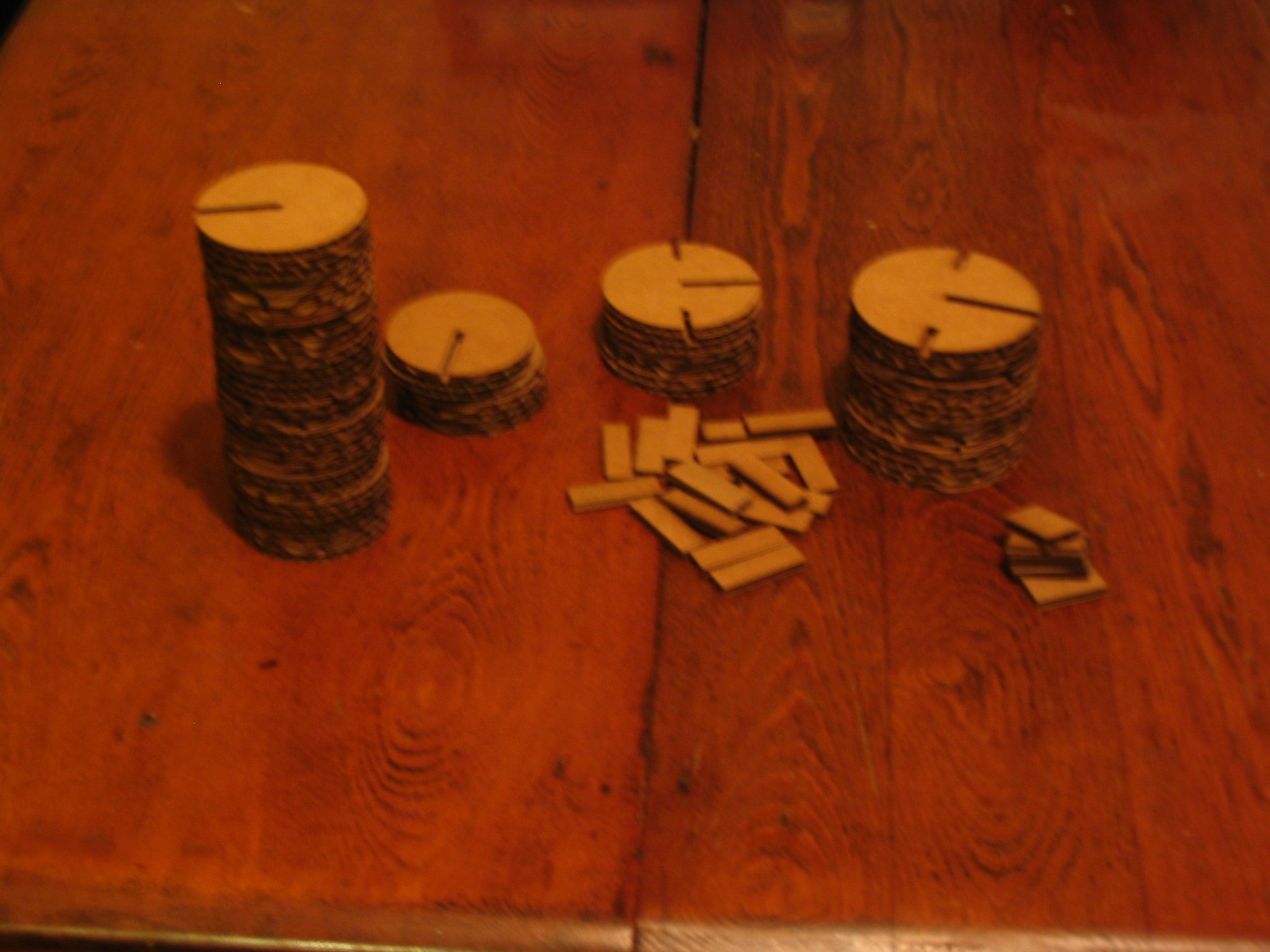 |
 |
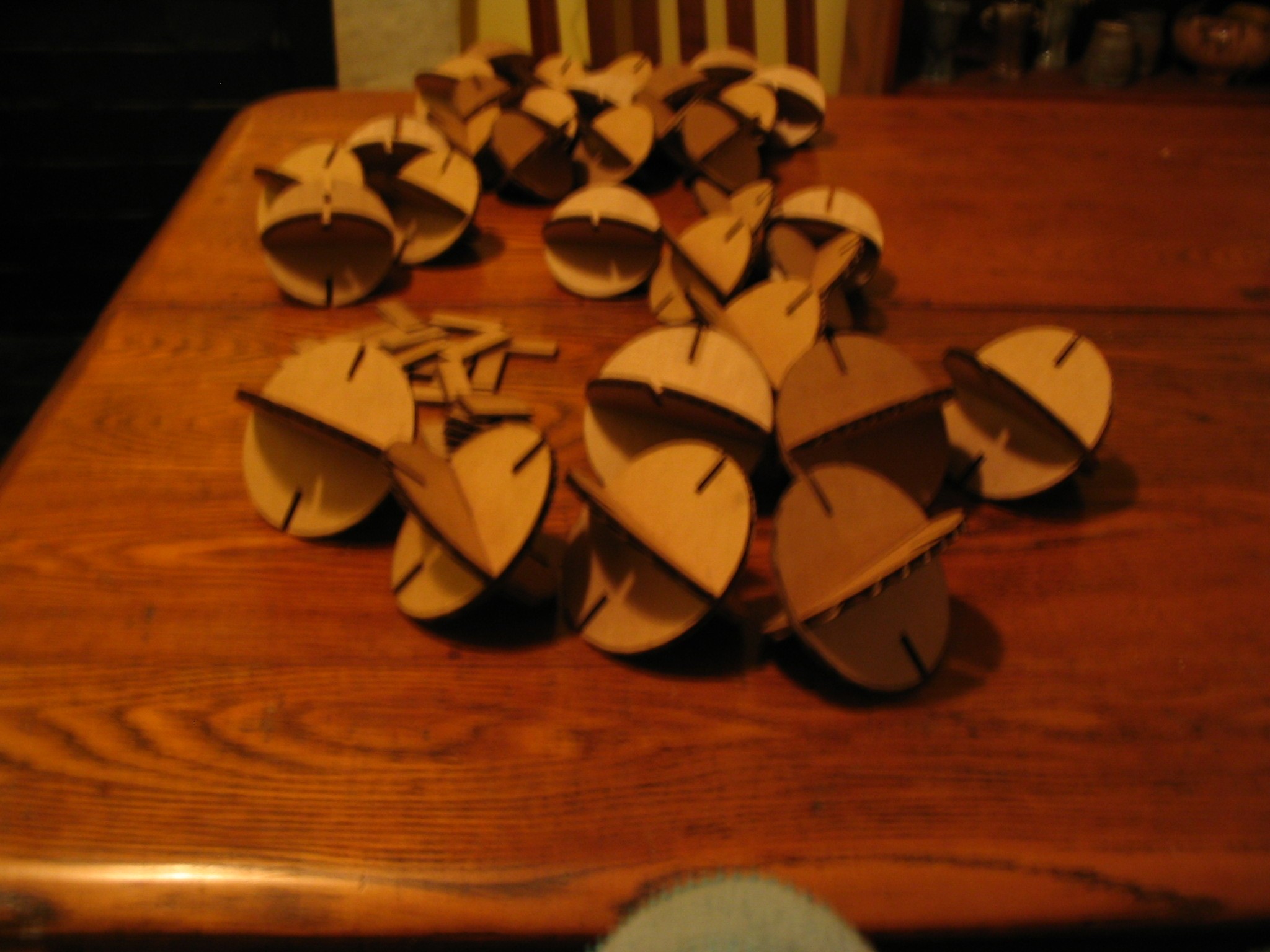 |
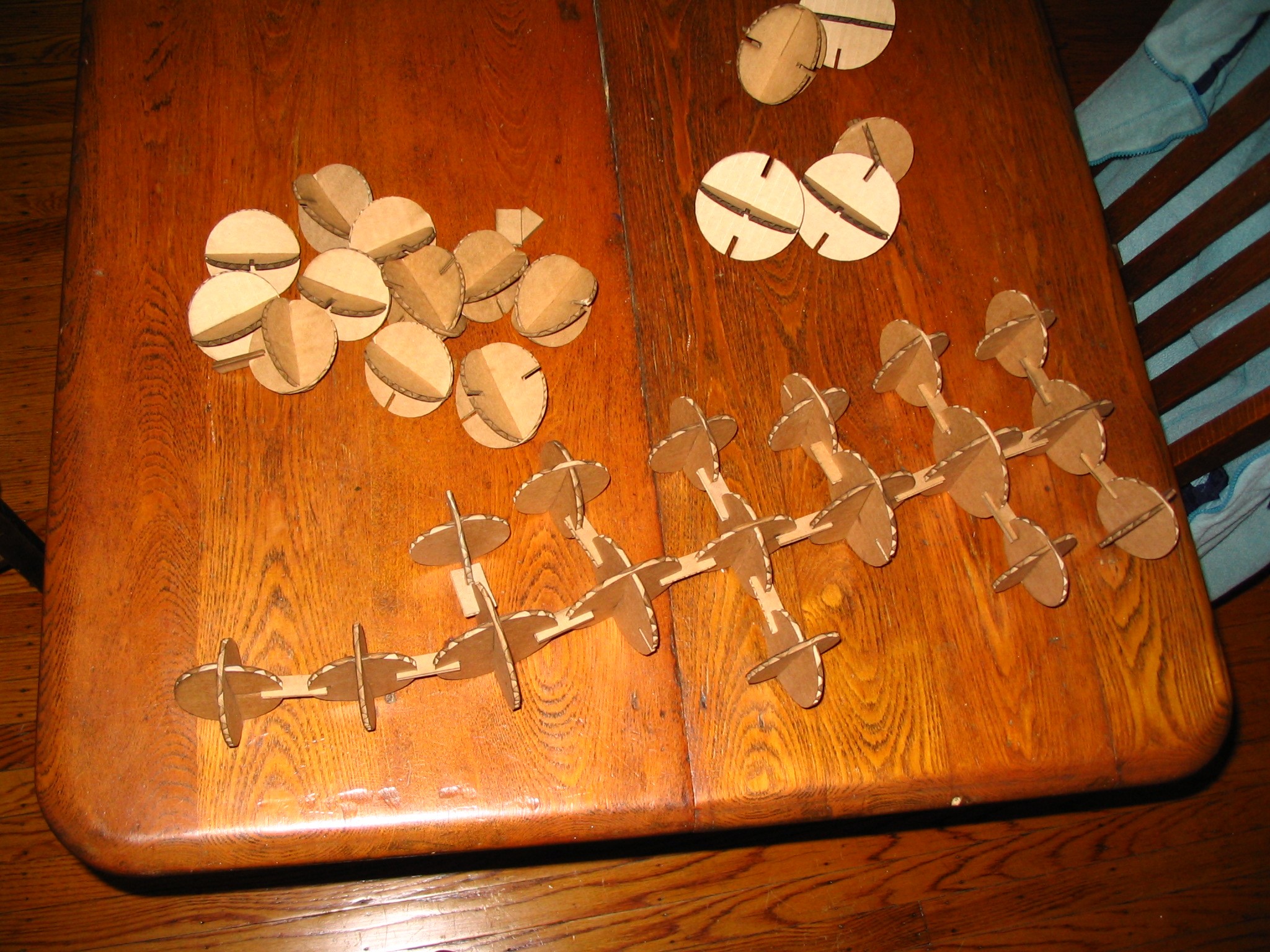 |
 |
| "Atoms" before assembly | Building the atoms | Ready to react... | Two glycines (shows peptide bond) | Proline - the helix breaker! |
I didn't have time to make (cut) the truck parts because of the laser lens issues Friday afternoon, and I didn't end up designing a clarinet stand because I needed it to have rounded edges and I couldn't figure out how to make open office draw a triangle with measured, curved edges. I did make a second generation of the atomic models for proteins, though. I decided that varying the sizes of the different atoms was not really helpful in allowing the user to tell them apart, so I added color (with permanent markers). I also added more connection ports on the "atoms" and 2 kinds of inter-atom connectors - choosing the other connector "rotates" a bond. This allows for much more complicated and realistic non-coplanar geometry in the assembled protein molecules. There are some pictures of the second generation protein kit below. The red pieces are carbon atoms, the black are hydrogen, the brown are nitrogen, and the blue striped are oxygen.
 |
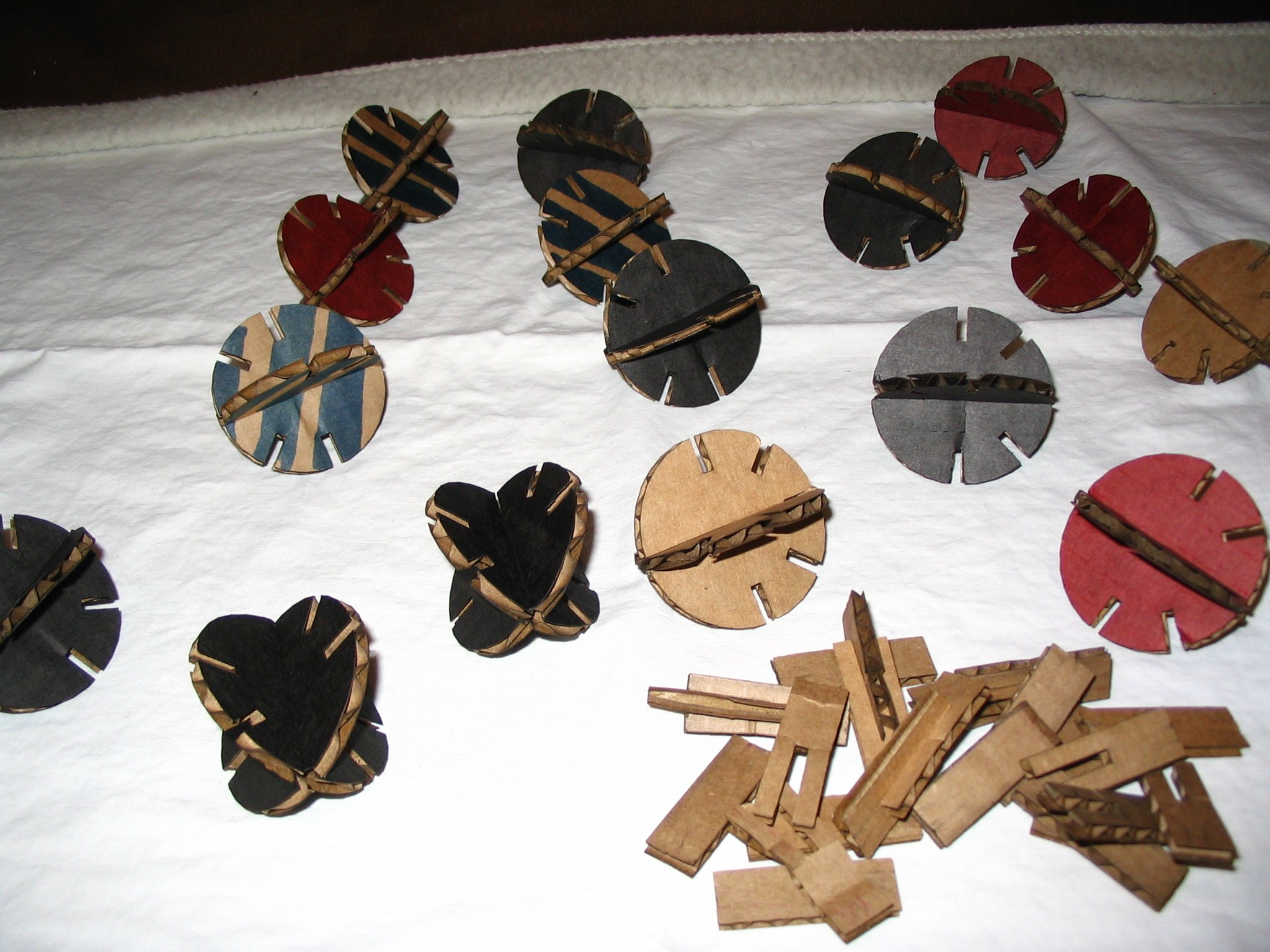 |
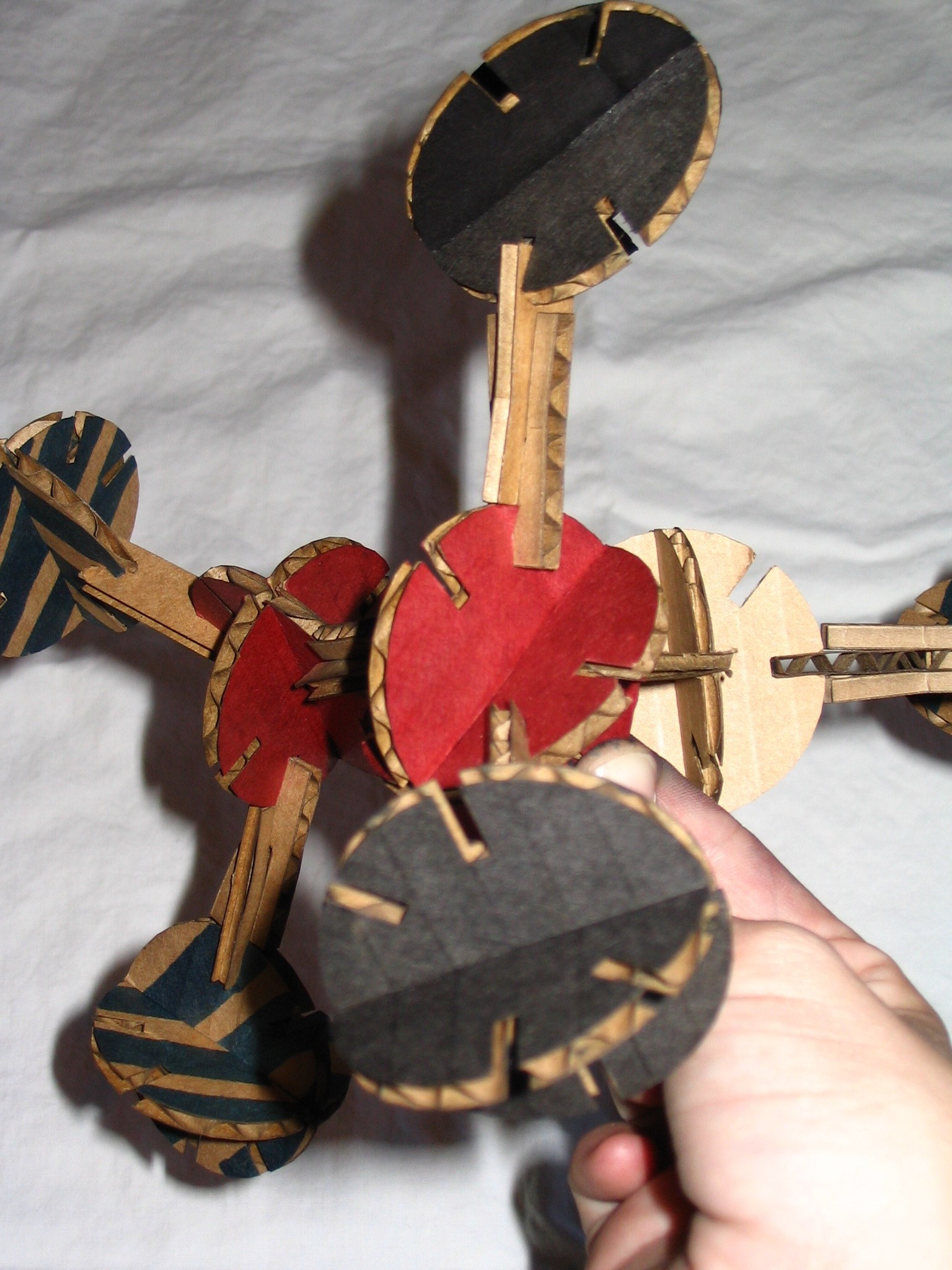 |
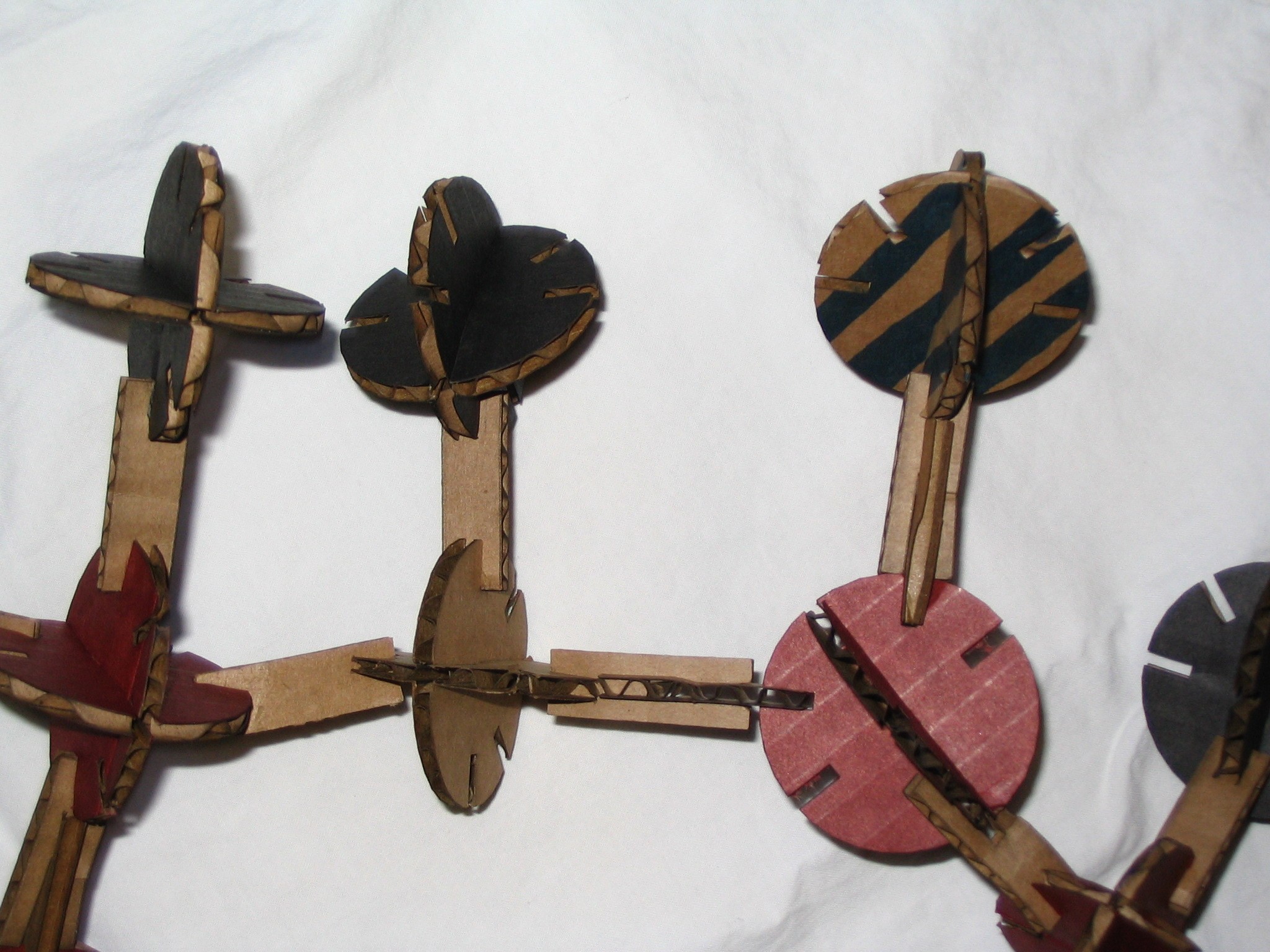 |
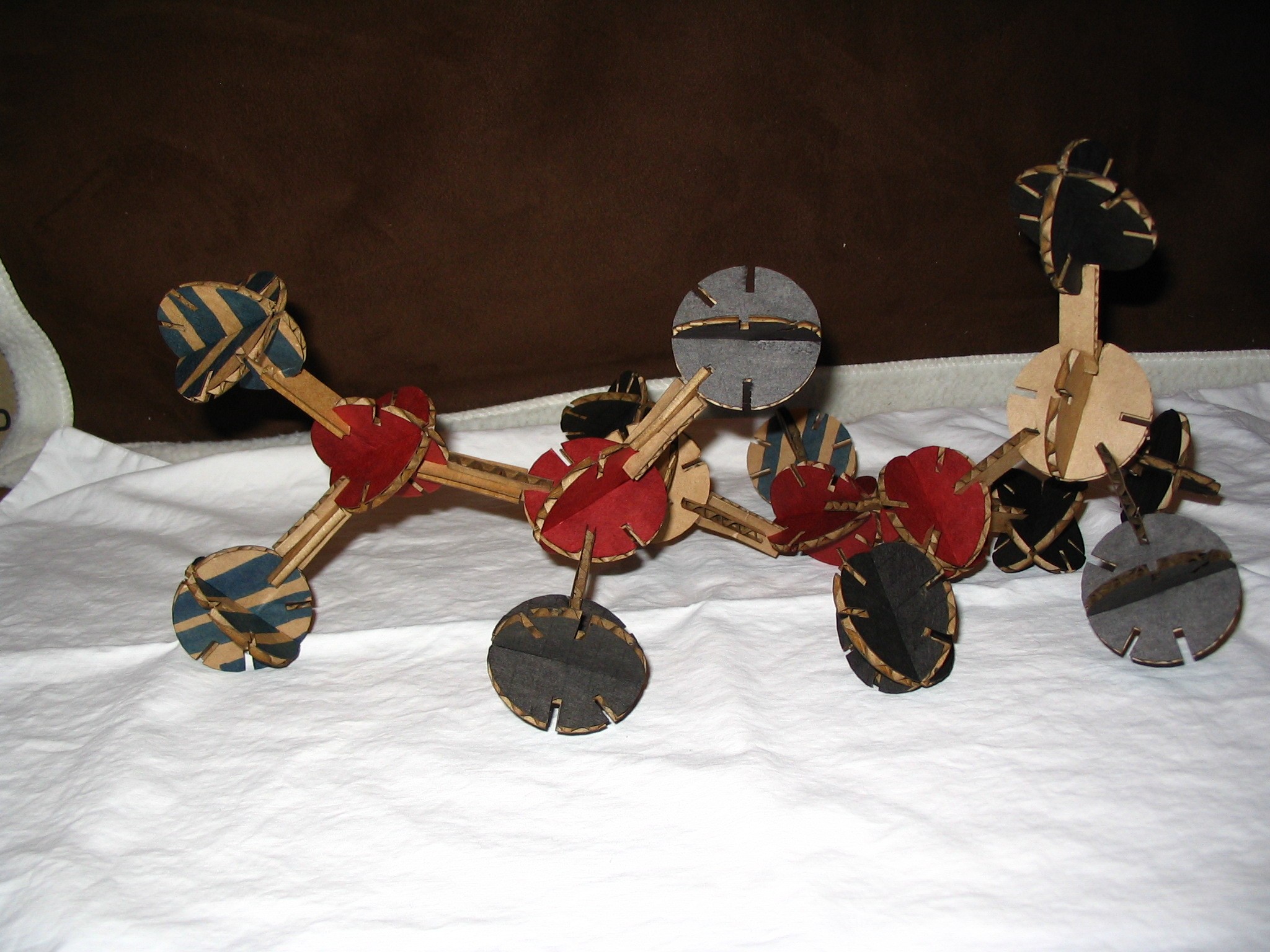 |
| "Atoms" before assembly | Semi-assembled atoms | The 3D stereochemistry around C: CO-R-N | Two glycines (shows peptide bond) | This kit can make 3D protein models! |